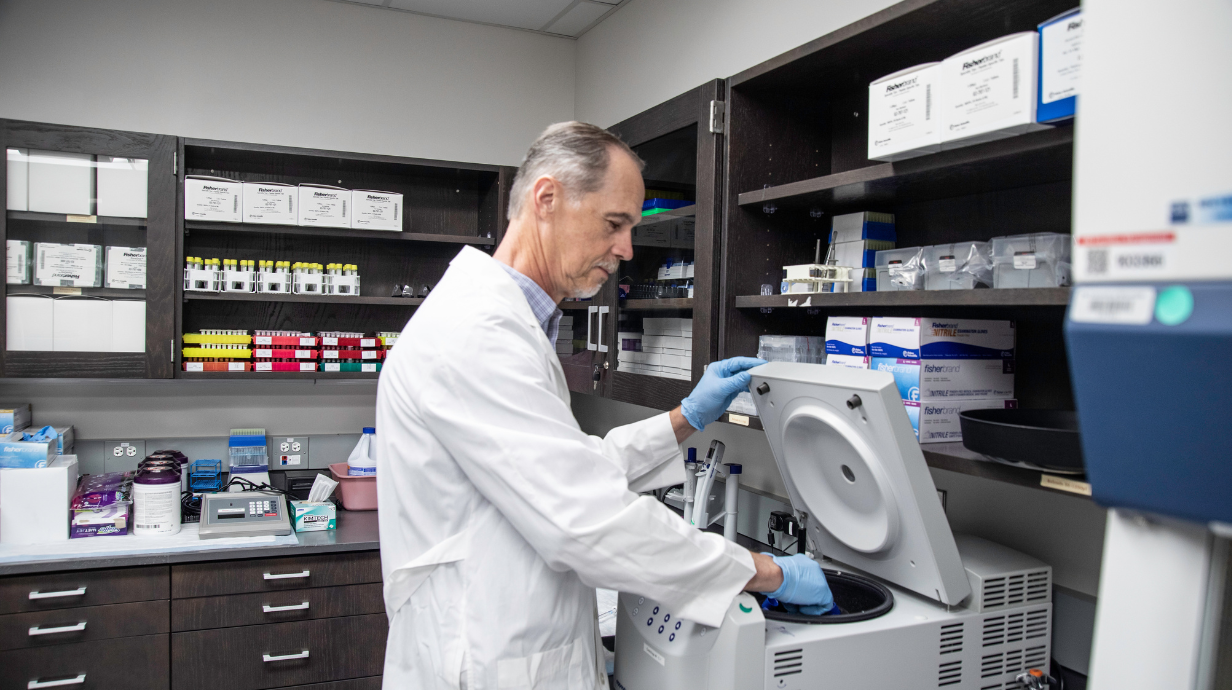Clinical Resources
Explore current, evidence-based cannabis research and resources to support informed clinical decisions and advance patient care.

Advancing clinical practice through data-driven cannabis research
As a healthcare provider, you need clear, reliable information to guide safe and effective use of medical cannabis. But navigating emerging research, evolving regulations, and patient questions can be complex.
At NCCRE, our mission is to equip healthcare professionals, researchers, and industry leaders with clear, actionable insights that support informed clinical decisions, regulatory strategies, and product development. With access to our growing library of research, you can stay up-to-date on the latest findings related to cannabis safety, efficacy, and therapeutic potential across a wide range of conditions.

Community Toolkit for Patients and Providers
As part of NCCRE's goal to make current data readily available, we helped the Mississippi Medical Marijuana Association (3MA) develop a medical cannabis community toolkit —a free, public resource designed to make trustworthy, easy-to-understand information more accessible. Built with Mississippi communities in mind, the toolkit includes printable flyers, user-friendly guides, and educational tools you can share with patients.

The Cannabis Review by MCR Labs
MCR Labs is a national leader in cannabis testing and scientific data collection. Through The Cannabis Review, their team curates peer-reviewed research on cannabinoids and terpenes, organizing it by compound, condition, and effect. This resource supports clinicians in exploring the biological activity of specific cannabinoids, the strength of available evidence, and dosing ranges studied in research. NCCRE is partnering with MCR Labs to further develop this tool.
Drug-Drug Interactions with Medical Cannabis
Unsure if a medication will react with medical cannabis? To explore potential drug interactions, visit Penn State's drug interaction tool that allows you to enter a medication and assess whether it may be used safely alongside cannabis.
- THC and CBD are metabolized by cytochrome P450 (CYP)3A4; THC is also metabolized by CYP2C9.
- CYP3A4 inhibitor ketoconazole nearly doubled THC and CBD concentrations - similar interactions could occur with other CYP3A4 inhibitors, augmenting the psychoactive effects of THC and dose-related adverse effects of cannabidiol (e.g., somnolence, transaminase elevation).
- CYP2C9 inhibitors such as cotrimoxazole, fluoxetine and amiodarone would also be expected to increase THC exposure and psychoactive effects.
- Cannabidiol inhibits CYP2C19, increasing levels of the active metabolite of clobazam threefold.
- Interactions with other drugs metabolized by CYP2C19 should be anticipated.
- Very high international normalized ratio (INR) levels and bleeding have been reported with combined use of warfarin and cannabis.
- Smoked cannabis increases the clearance of theophylline 40%.
- Similar findings would be expected for other drugs metabolized by CYP1A2, such as olanzapine.
- Increased drug clearance occurs with regular cannabis use (> 2 cigarettes per week); no effect of occasional use reported.
- Warfarin (increased INR and risk of bleeding
- Clobazam (increased risk of benzodiazepine toxicity)
- Central nervous system depressants and sympathomimetics (additive effects)
- Theophylline, clozapine and olanzapine (reduced efficacy)
- Patients should be advised about possible increased cannabinoid effects with concomitant CYP3A4 and 2C9 inhibitors.
Explore condition-specific applications
-
CBD for Seizure Disorders
CBD has shown significant efficacy in reducing seizures, particularly in rare forms of epilepsy such as Dravet syndrome and Lennox-Gastaut syndrome.
Trial of Cannabidiol for Drug-Resistant Seizures in Dravet Syndrome Effect of Cannabidiol on Drop Seizures in Lennox–Gastaut Syndrome -
THCV for Appetite Suppression
Tetrahydrocannabivarin (THCV) has demonstrated potential as an appetite suppressant in early research. While studies are ongoing, THCV is being explored for its use in metabolic and weight-related conditions.
Weight loss and therapeutic metabolic effects of tetrahydrocannabivarin (THCV)-infused mucoadhesive strips The role of tetrahydrocannabivarin (THCV) in metabolic disorders -
CBD Combinations for Sleep
Many patients report improved sleep outcomes with CBD-based formulations, particularly when combined with other cannabinoids or botanicals.
NCCRE's Petition Review on Insomnia Effectiveness of a Cannabinoids Supplement on Sleep and Mood in Adults With Subthreshold Insomnia
Dosing Guidelines & Protocols
Dosing medical cannabis requires careful consideration of both the product formulation and the route of administration. Here's a look at delivery methods and corresponding bioavailability.
Smoking Joint Bioavailability: 69%
Smoking Pipe Bioavailability: 45%
Average Inhaled (Any Mode) Bioavailability: ~25%
Grotenhermen, F. Clinical pharmacokinetics 42.4 (2003): 327-360
Karschner E. et al. Clin Chem. 2011 Jan; 57(1)66-75.
Huestis, Marilyn A. Chemistry & biodiversity 4.8 (2007): 1770-1804
A Schoedel, K et al Current pharmaceutical design 18.32 (2012) 5008-5013
Reach out to our experts for guidance
Navigating clinical research or dosing protocols can be complex—but you don’t have to do it alone. NCCRE’s team is here to offer guidance, share insight and connect you with the information you need to move forward with clarity and confidence.
Robert Welch
Director of the National Center for Cannabis Research and Education and Research Associate Professor in the Research Institute of Pharmaceutical Sciences
